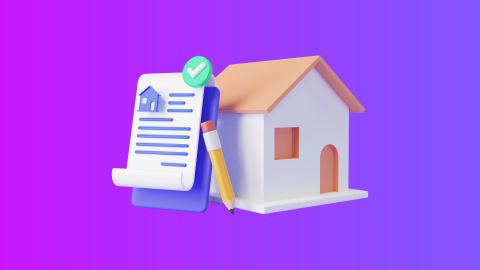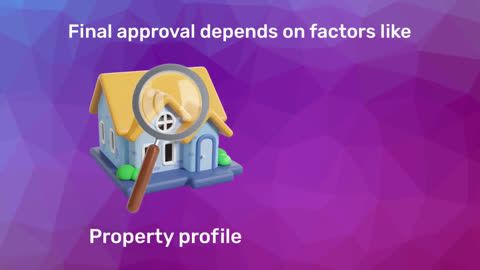Buying a property is one of the most significant investments people make in their lifetime. To make an informed decision, understanding property measurements is crucial, especially the term "RERA carpet area." This guide will demystify the concept, helping you navigate the real estate market with confidence.
What is RERA carpet area?
The Real Estate (Regulation and Development) Act, 2016 (RERA) was introduced to protect homebuyers' interests and promote transparency in the real estate sector. One of the critical aspects of this act is the standardized definition of the "carpet area."
RERA carpet area refers to the net usable floor area of an apartment, excluding the area covered by external walls, areas under services shafts, exclusive balcony or verandah area, and exclusive open terrace area, but includes the area covered by internal partition walls of the apartment. Essentially, it is the area within the walls where you can lay a carpet, giving a clear picture of the usable space in your home.
Importance of RERA carpet area
Understanding the RERA carpet area is essential for several reasons:
- Transparency: It ensures transparency between builders and buyers, eliminating discrepancies and confusion over property size.
- Fair pricing: Pricing based on carpet area allows for fairer pricing, as buyers pay only for the usable area.
- Informed decision making: Buyers can make better comparisons between different properties, ensuring they get value for their money.
How is RERA carpet area calculated?
To calculate the RERA carpet area, you need to consider all the usable spaces inside the walls of the apartment, including:
- Living rooms
- Bedrooms
- Bathrooms
- Kitchen
- Internal walls
Excluded Areas:
- External walls
- Service shafts
- Balconies and verandahs
- Open terrace areas
For example, if an apartment has a total built-up area of 1500 square feet, with 200 square feet for external walls, 50 square feet for balconies, and 50 square feet for service shafts, the RERA carpet area would be calculated as follows:
Total built-up area - (External walls + Balconies + Service shafts) = RERA carpet area 1500 sq. ft. - (200 sq. ft. + 50 sq. ft. + 50 sq. ft.) = 1200 sq. ft.
RERA carpet area vs. other property measurements
Before RERA, terms like super built-up area, built-up area, and carpet area were used interchangeably, often causing confusion. Here’s how RERA carpet area differs from other common property measurements:
- Built-up area: Includes the carpet area plus the thickness of external walls, internal walls, and areas of balconies and terraces.
- Super built-up area: Includes the built-up area plus a proportionate share of common areas such as lobbies, staircases, lifts, and corridors.
Understanding these differences helps buyers avoid paying for areas that are not usable within their apartment.
Steps to determine RERA carpet area in property documents
- Check the sale agreement: The sale agreement should clearly mention the carpet area as per RERA guidelines.
- Verify with the builder: Ask the builder for a detailed breakdown of the carpet area, built-up area, and super built-up area.
- Inspect the property: Physically inspect the property to ensure the dimensions match the provided documents.
- Seek professional help: Consider hiring a property lawyer or a real estate consultant to verify the measurements and ensure compliance with RERA.
Advantages of knowing the RERA carpet area
Knowing the RERA carpet area has several advantages for property buyers:
- Better comparison: You can compare properties more effectively, focusing on the actual usable space.
- Accurate pricing: Helps in understanding the cost per square foot, ensuring you are not overpaying.
- Informed negotiations: Provides a strong basis for negotiating with builders and real estate agents.
- Compliance and transparency: Ensures that the property complies with RERA regulations, promoting transparency in the transaction.
Financing your property purchase
When you decide to purchase a property, understanding the RERA carpet area can help you determine the accurate cost, which is essential when applying for a home loan. Home loans provide the necessary financial support to purchase your dream home, with structured repayment plans that make them accessible for many buyers.
Bajaj Housing Finance provides competitive home loans designed specifically to cater to the requirements of property investors.
Here are the benefits of choosing Bajaj Housing Finance Home Loan
- Attractive interest rates: Enjoy competitive interest rates, making home ownership more affordable.
- Long repayment tenure: You can choose a repayment tenure that suits your financial situation, ensuring that managing your home loan is hassle-free.
- Quick disbursal: Experience a swift and hassle-free loan application and disbursal process, helping you move into your dream home faster.
- Minimal documentation: Our streamlined documentation process makes applying for a home loan easy and convenient.
Ready to take the next step toward home ownership? Start the process today and apply for a Bajaj Housing Finance Home Loan!




